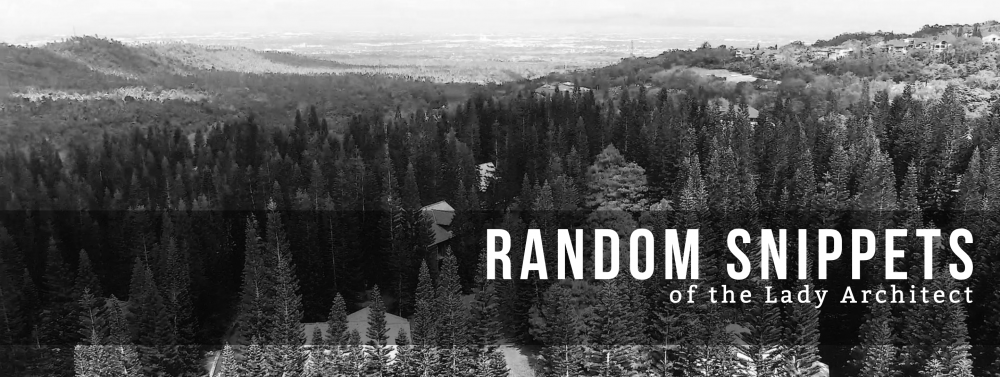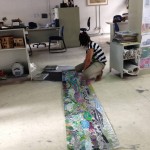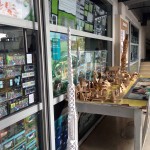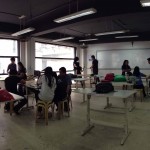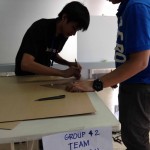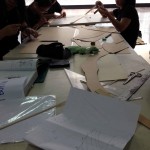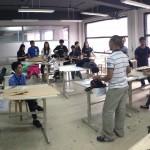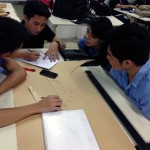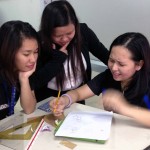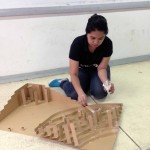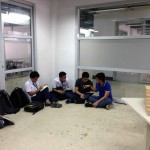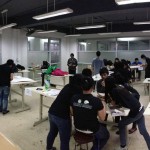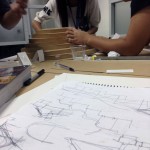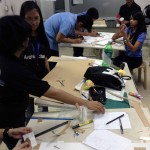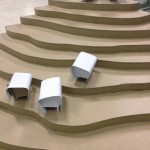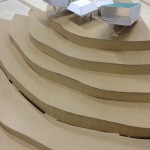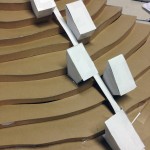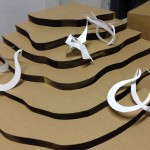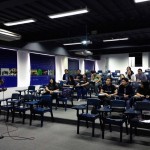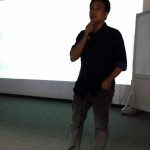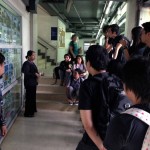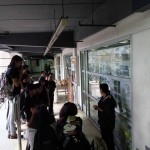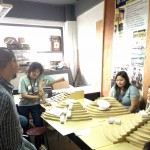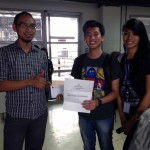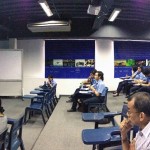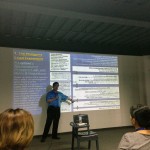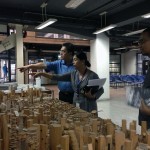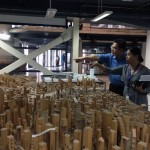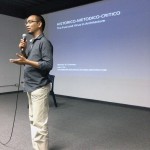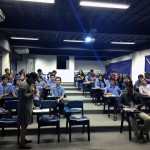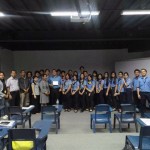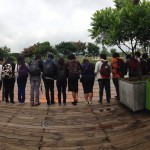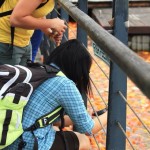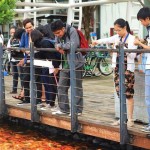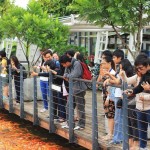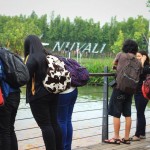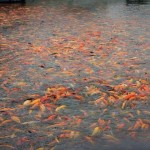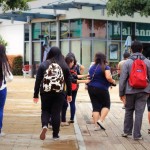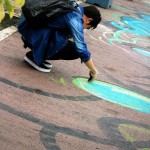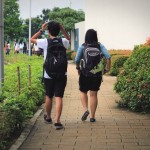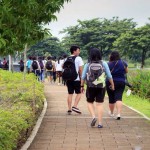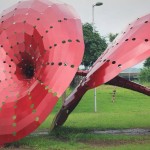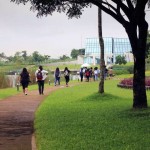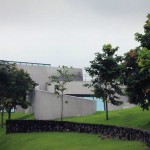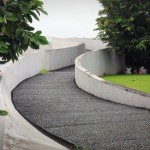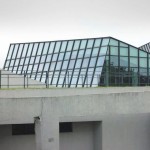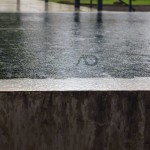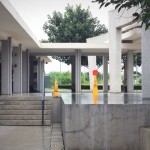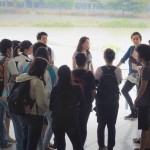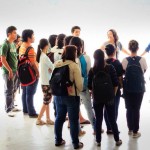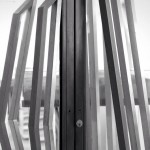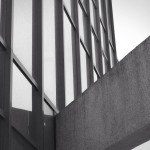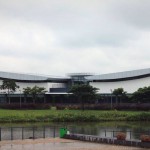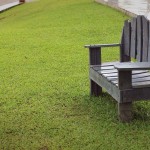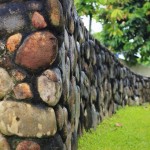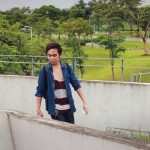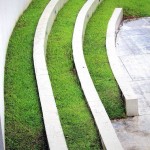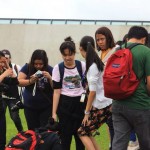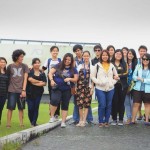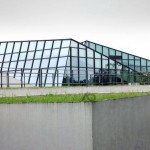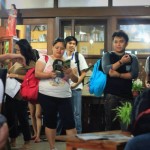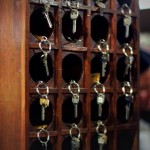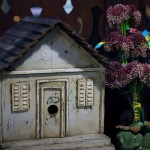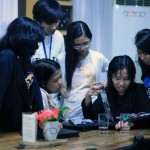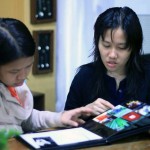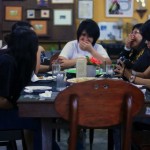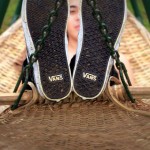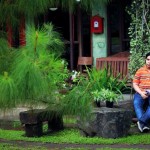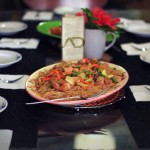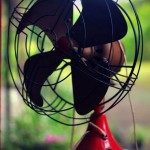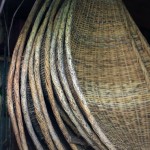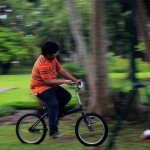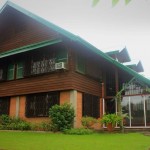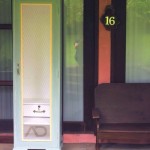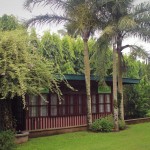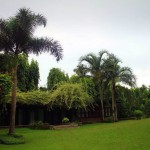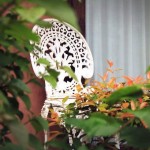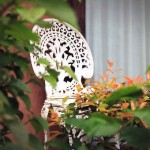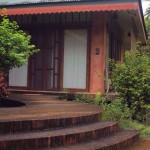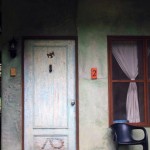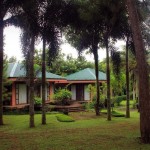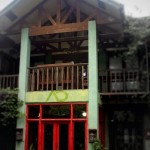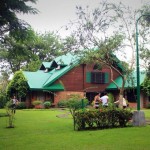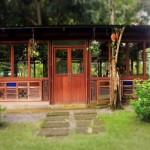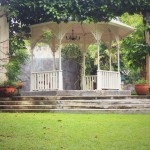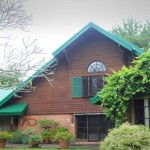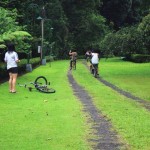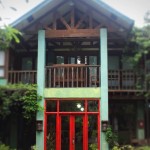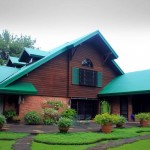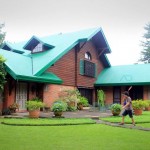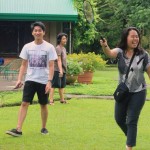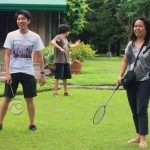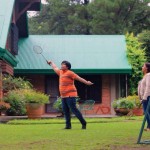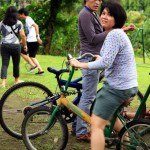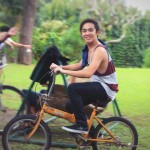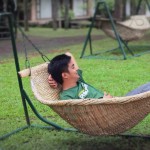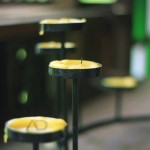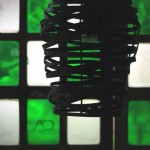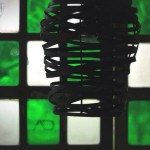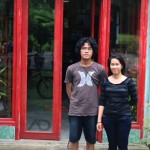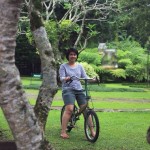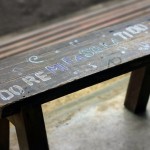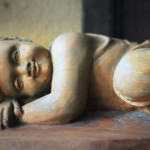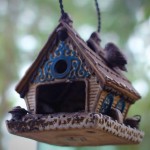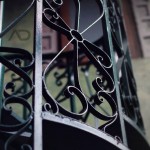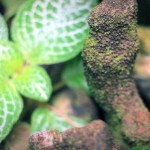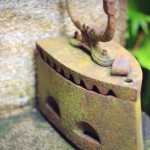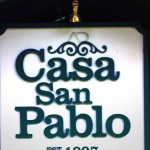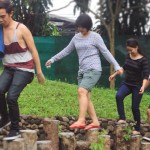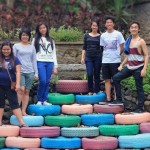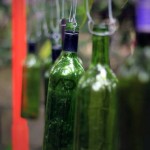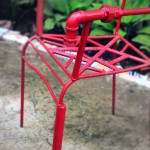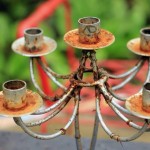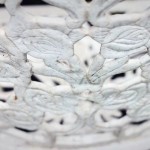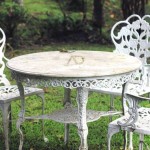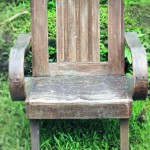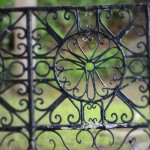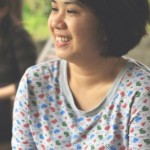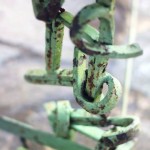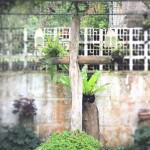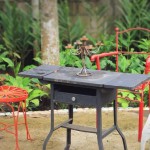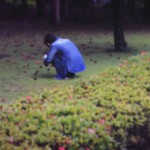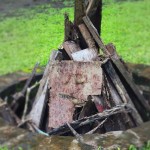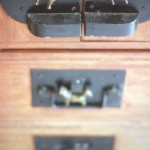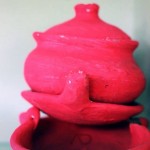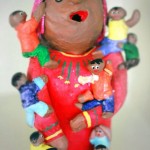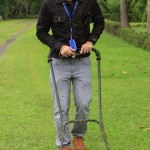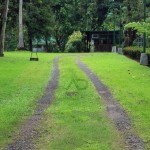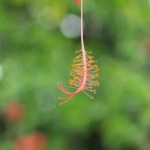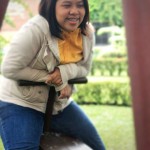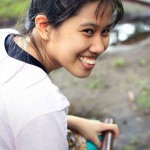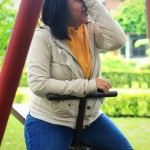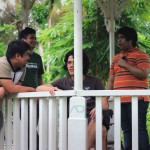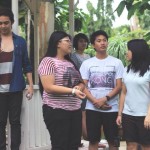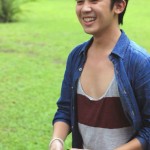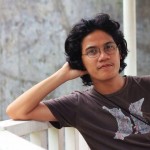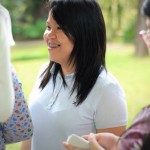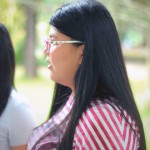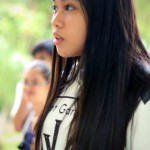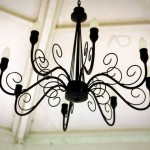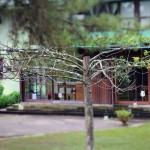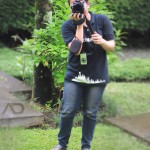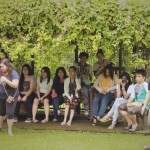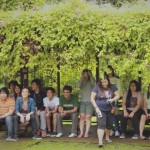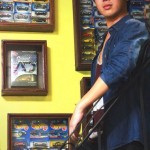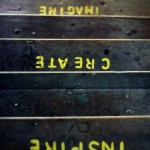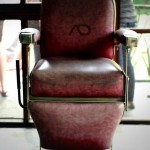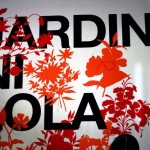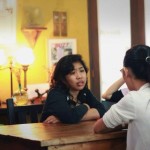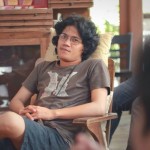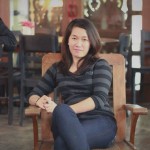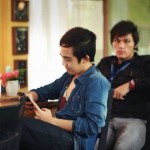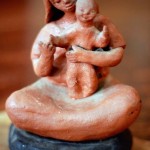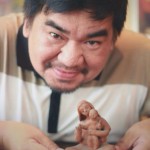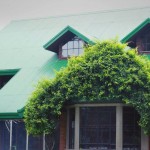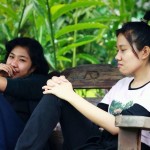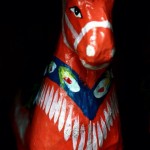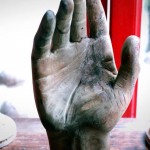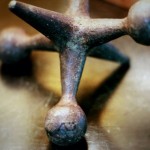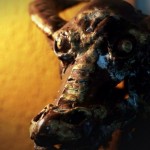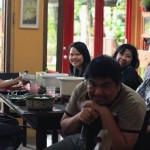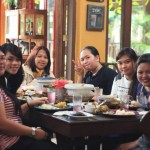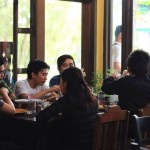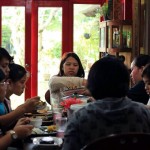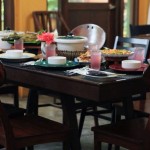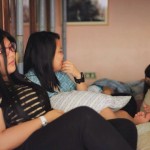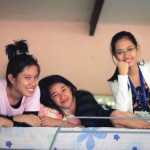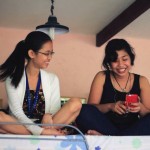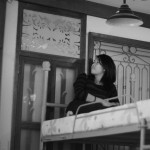So you see my updated header? Isn’t it cool?!?! Thank you to my ArchitecTon who architected it. Hahaha It’s very sweet of you! <3
Monthly Archives: October 2013
World Day of Architecture 2013
Every year, the FEATI University College of Architecture celebrates the World Day of Architecture together with all the architects not only in the country, but globally. The theme for this year’s celebration is CULTURE-ARCHITECTURE because the UIA (Union Internationale des Architectes) believes that the link of architecture and culture are constant subject of analysis and discussion and that they hope to create new ideas of interpretation and illustrations of architects’ diversity, richness, imagination and capacity for invention through their designs and realizations. Globally, architects sees as October 7, 2013 to be the official date of WAD, however, COA decided to celebrate it on Sept. 19 and 20, 2013 since it coincides with the Final examination of the University. The college prepared a line-up of speakers to talk about Culture- Architecture: Philippine Architecture as a Living Culture: Arch. Walther Ocampo, Arch. Maundelito Florendo and Arch. Joel Rico.
Day 1. September 19, 2013
The College of Architecture faculty together with the speaker facilitated a whole-day workshop entitled “Mutation- The Survival of Architecture on the Age of Pluralism” conducted by Arch. Walther Ocampo. The students were divided into 5 groups that are comprised of 1st year to 5th year students. The challenge was to come up with a sketch model of the Ifugao Rice Terraces made up of packline boards and then conceptualize a design derived from a traditional Ifugao House. The students have to come up with a modern design of a Ifugao House but take into consideration to maintain the original functions of the house. At the end of the workshop, each group have to present their work and explain their design and concept in front of everyone.
Day 2. September 20, 2013 (morning activity)
The COA morning speaker for the day was Arch. Maundelito Florendo. Arch. Florendo, is a product of EARIST Sampaloc Manila. After a few years of practice in architecture, he entered the academe as an instructor in EARIST and Adamson University and then eventually became a Dean in EARIST College of Architecture. He is also a member of the EARIST Board of trustees. Apart from that, he is also the past president of UAP Arkizonian Chapter, now president of the PIA Quezon City Chapter president and also a lecturer at The Brown Bauhaus Studio Architecture.
Arch. Florendo discussed about the Rules 7 and 8 of the Revised IRR of PD 1096 or the National Building Code of the Philippines. The topic is very essential and timely to the students of architecture because it is one of the main subjects that is being tackled in the Architecture Board Exam. It was well- presented through a PPT presentation with step by step 2D and 3D analysis and showed a lot of mathematical computation on how to consider the lighting and ventilation system of the building, how to compute for the Maximum Building Footprint, Allowable Building Footprint, allowable building Heights and the likes. Upon discussing the data and computations, it was thoroughly explained to the students how proper lighting and ventilation affects a certain design solution with regards to building types, building requirements, design/ aesthetics and zoning.
Day 2. September 20, 2013 (afternoon activity)
The COA invited Arch. Joel V. Rico, fpia as the afternoon speaker for the WAD celebration. He is a practicing architect for 15 years and an architectural historian/author, with passion for Philippine heritage structures, history and restoration/conservation with outstanding skills in Architectural conceptualizing & designing, research and actual construction methods. He is a graduate of the National University in Manila (1993 and one of his prominent projects is the Ciudad Real de Acuzar or Las Casas Filipinas de Acuzar in Bagac, Bataan. He is also the national president of the Philippine Institute of Architects (2011-2013). Aside from being a practicing architect, Arch. Rico is also an instructor at De La Salle University-College of Saint Benilde.
Arch. Rico shared his topic “Reviving Heritage” to the students of COA some very insightful history of some of his projects he was able to work on, discussing the features and story behind each and every house. Passionate as he is in his field of specialization, he was able to impart to the students how he was able to start anew amidst the many controversies he went through at that time and taught them the value of reviving heritage.
The students were very inspired in hearing his stories about Philippine architecture and opened a new door of opportunity to not only go into design and construction but they realized there is also a career waiting for them in the field of architecture which is heritage restoration and conservation.
Pecha Kucha on RA 9266
It has been a practice in the College of Architecture to conduct regular sessions of what we call the Pecha Kucha sessions wherein a speaker is invited to deliver a talk anything related to architecture and share it to the students of COA.
COA is indeed very fortunate to have one of the “big personalities” in the industry of Philippine Architecture- Arch. Armando Alli, apec architect. He is a product of the University of the Philippines School of urban Planning (1994). He has had more than thirty (30) years of progressively responsible/ diversified experience in the professional practice of the architectural and allied design professions, particularly in the fields of land use, site, physical, transportation, and environmental planning, environmental design, general consulting, professional practice regulation, construction arbitration and mediation, volunteer government service, architecture advocacy, the project management of consulting services and the crafting of national laws and regulations that concern the management and use of the built environment.
The speaker discussed in the forum about the introduction of the RA 9266 and stressed out the importance of this “special law” and how it would affect the students in undertaking architecture. He was able to discuss the following issues:
- The Philippine Legal framework presented in such a way that the students could easily comprehend.
- Discussed about the issue on the Registered and Licensed Architects versus the Civil Engineers on their roles on building design.
- Introduced the scope of the RLA Practice from architectural programming and other related architectural services.
- The essentials on taking up the ALE / LEA (Architecture Licensure Examination) and explained the importance of theory and practice of architecture in preparation for the board exam.
- Explained the illegal practice of architecture such as people practicing architecture without a valid PRC ID card renewable every 3 years, BS Architecture graduates and students doing works of architecture for unregistered persons, RLAs performing acts violative of RA 9266, Code of Ethical Conduct and the Standards of Professional Practice.
All in all, the Pecha Kucha turned out to be an interactive activity as the students were able to voice out their questions, issues and concern with regards RA 9266 and was addressed by Arch. Alli.
The second part of the Pecha Kucha, COA has invited another speaker, Arch. Walther Ocampo. He is an architect, educator, professional perspectivist, illustrator, scale model maker, installation artist, and a social entrepreneur. He received his master’s degree in Architecture Education at the Mapua Institute of Technology in 2011 and his architecture degree at the Technological University of the Philippines in 1996.
He is the Studio Master, Director, and co-Owner of The Brown Bauhaus Alternative School of Architecture and Design. The Brown Bauhaus is the first alternative learning center in the country which was founded from the principles of the Staatliches Bauhaus by Walter Gropius and other progressive pedagogues. Its main manifesto is to advance the learning experience of the Filipino architects and students in exploring the many possibilities of architecture and design beyond the conventional educational borders which is heavily influenced by the Beaux Arts tradition.
He is also the founding mentor of The Brown Bauhaus’ student arm, PROVECTUS> School of Advancing Architecture Students. An alternative group of architecture students whose main objectives are to explore architecture, learn progressive creativity and innovate design ideas through multi and inter-discipline collaboration while responding to the architectural needs of communities. Not to mention, Arch. Ocampo has been my mentor during my college years, and upto now, I always look up to him as one.
His topic for the Pecha Kucha is about the Significant Insights on Architectural History and Its Relevance on Present and Future Design. He presented his topic through a powerpoint presentation and introduced to the students some of the important and significant icons of architecture.
He explained to the students the importance of the balance of theory and practice of architecture. One of the highlights of the event was that it opened a sense of architectural criticism to the students on the how to apply historical elements in their present and future design.
Sessions like these are indeed very important in undertaking architecture as the students get to be exposed to different speakers and different views on architecture. However, we have noticed that activities as such are time consuming in the part of both the students and faculty prior to the preparation of the said event. Students had to be excused from their classes, thus missing out on some of the topics of the day. On the part of the faculty, the preparation really took a lot of time since it is one of the first activities wherein COA invited such big personalities in the architecture industry to conduct a talk in the college.
Nevertheless, the students still benefited from the Pecha Kucha Series because they get to have first-hand information from the people who are expert in their respective specialization in the field of architecture and able to share them to the students of COA.
- Introduction on RA 9266 01
- Arch. Alli explaining the Philippine Legal System
- Utopian Manila Shown by Dean Mananghaya and Arch. Ocampo to Arch. Alli
- FEATI’s pride- Utopian Manila Shown by Dean Mananghaya to Arch. Alli
- Historico- Metodico- Critico
- Pecha Kucha Series
- Pecha Kucha Series
Casa San Pablo Educational Field Trip 2013
Every year, the College of Architecture of FEATI University makes it a point to go out on a field trip as part of their Great FEATI Experience or The Great COA Experience to make the study of architecture more experiential in nature and is a tool for the enhancement of creativity of the students. This year, the College of of Architecture decided to conduct an educational field trip down south of Metro Manila- Nuvali, Sta. Rosa Laguna and Casa San Pablo, Laguna.
Living up to the thrust of the College of Architecture which is achieving sustainable and green architecture, the college went to Nuvali located in Sta. Rosa Laguna which one of the pioneers of sustainable planning development of the country. Some of the features of the place are as follows:
– Largest sustainable community in the country.
– The planning of the place promotes healthy and active lifestyle.
– The workspaces are integrated in the environment.
– It transforms the work landscape optimizing productivity and efficiency.
– Social, Environmental and Economic stability wherein facilities are creatively designed tort the needs of business while nourishing harmony, balance and interconnection between individual and communities, human interface and natural landscape.
- Nuvali, nuvali but you.
- Here fishy fishy!
- Nuvali 01
- Nuvali 02
- Nuvali 03
- Bike for fresh air
- errr… worms?
- Walkathon
- Timber decking
- Mr. Detail 🙂
- Penster
- Walkathon again
- Urban art
- More walking!
- Reminds me of Villa Savoye
- Villa Savoye-esque
- Concrete+ Glass + Steel = modern
- Explaining green
- Green is happiness!
- Lines
- Contrast of line
- Retaining wall
- Action star?
- Contrast of texture
- My babies.
- Paeng!
The second destination was at Casa San Pablo. It is a bed and breakfast country inn situated in a corner of San Pablo Laguna family compounds. It is owned by a couple, avid art collector and hobby enthusiast Boots Alcantara and his wife, An Alcantara, a writer and a magazine editor.
Casa San Pablo is designed in a very eclectic manner as majority if the furniture and elements are made or collected by the couple themselves which they gathered from the places they have travelled to. It is said that the aim of Casa San Pablo is for people to appreciate the small things and make you feel at home. Since the couple are frequent travellers and is a fan of bed and breakfast lodging, they had the idea that they wanted people to go their place and make the guests feel at home and that they experience the kind of hospitality they had from the places they’ve been to. On almost every corner of the Casa, there is a story behind it that makes it much more interesting.
What makes Casa San Pablo special is that it is a place where people from the city can regain their connection with nature and develop more sense of creativity. It is one of these places wherein you just want to let your inner creativity let loose. Art, sculpture (pottery making), poetry making, photography and music are just some of the things that you can do in the Casa that can boost your creativity.
Creativity is one of the important ingredients in taking up architecture that is why the students of the College of Architecture enjoyed the trip at Casa San Pablo for they felt that they have renewed they passion for the arts and of course, architecture for they had the opportunity to visit some of the rooms, each with different design approach, concepts and themes.
The field trip that took place this day helped develop their critical thinking and observation as well for some of them were asking the faculty and the tour guide many questions regarding the design i.e. Their take on eclecticism versus modern minimalist concept, details versus urban scale appreciation, simple landscaping versus massive urban scape, intimate versus social scale and the likes.
In conclusion, having field trips as such helps the students in developing their design skills and critical thinking because they are able to visually and physically experience the place itself. Immersing themselves in new places and new experience aids in the discovery and appreciation of what architecture really is.
visit their website for more info:
www.casasanpablo.com and www.nuvali.ph
